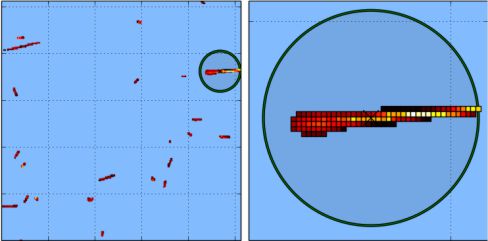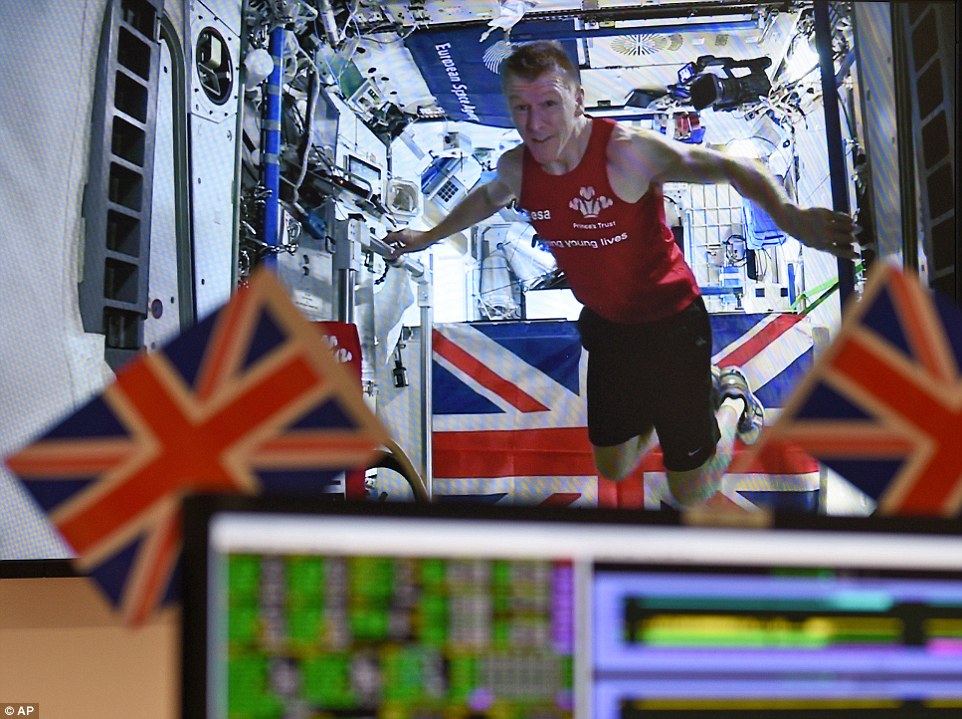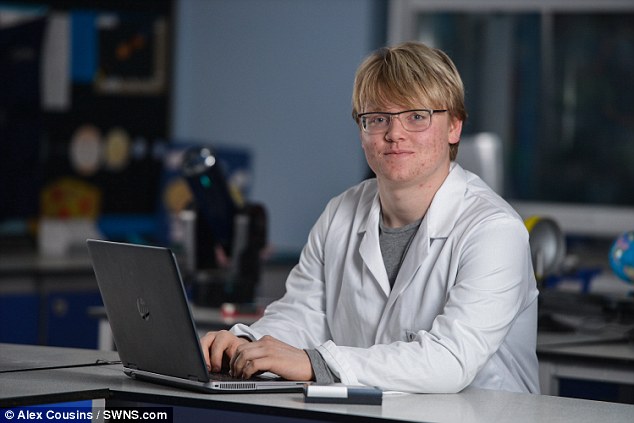17-year-old schoolboy fixed NASA error

Miles Solomena with particle detector. Photo: Alex Cousins / SWNS.com
British teen Miles Soloman (Miles Soloman) from Sheffield contacted NASA scientists and pointed out an error in the dataset they put online. We are talking about the testimony of particle detectors at the International Space Station - there Miles found negative energy values that were missed by NASA engineers.
Last week, the guy got his moment of glory: he gave several interviews in the media and spoke on BBC Radio 4 national radio program World at One .
In December 2015, NASA, together with the British Institute for School Research, made publicly available data sets from the particle detector to the ISS for schoolchildren to study ( the TimPix project ). One of these students was Miles Solman. As part of a research project for his school Tapton in Sheffield, he carefully studied the evidence.
')
This is a unique opportunity for schoolchildren - they can carry out their training projects not on some test sets, but on real data received from space using real equipment. In this case, we are talking about the indications of the level of cosmic radiation, which the detectors on the ISS shot every 4 seconds.
On the ISS, five Timepad hybrid silicon pixel detectors manufactured by Medipix Collaboration , created at CERN, were installed. Detectors similar in principle of operation are used in experiments at the Large Hadron Collider. Data from five detectors was accumulated and periodically sent for analysis to the Space Radiation Analysis Group division at NASA. Detectors register alpha, beta, gamma particles, minimal ionizing particles , fragments of heavy ions, etc. — the direction and energy of radiation.

An example of data from the Timepix detector on the ISS shows a full frame of 256 × 256 pixels (left) of particles recorded in the 4-second interval and a possible candidate for a proton in an enlarged view (right)
A 6-month radiation measurement experiment was conducted by British astronaut Tim Peake from December 2015. Probably, the detectors and the experiment itself are named after him.

British astronaut Tim Peak on the ISS in December 2015. Photo: AP
“We received a large number of Excel spreadsheets, and this is much more interesting than it sounds,” said Miles Solomen in an interview with BBC Radio 4. “I immediately went down down the table, where the smallest bits of energy were indicated.” Miles first sorted the list by decreasing values, probably to study the anomalies.
Physics teacher James O'Neill (James O'Neill) says about Miles: “We discussed the data, but he suddenly perked up during one of the lessons and asked:“ And why is the energy -1 shown here? ””. The student noticed that the sensors did not record the correct value of radiation, but instead kept a negative value. The student told the teacher that the energy could not be negative - and they decided to write a letter to NASA.
Solomen admitted that it was pretty cool to send a letter to the National Space Agency and get an answer where American professionals recognized their joint. Radiation sensors on the ISS have been working since December 2015. This means that NASA did not notice the mistake for more than 15 months, until a British schoolboy noticed her. “It's pretty cool,” says Miles. “You can tell your friends:" I just wrote to NASA and they study the graphics I made. "
NASA praised the information and even asked Miles to help correct the errors. The US agency’s engineers explained that they were aware that the sensors sometimes returned incorrect values, but thought that this happens once or twice a year. Apparently, no one thought to sort the data in descending order, as Miles did. Now, when the error is already known, it seems obvious to sort the data in this way, but no one has seen a reason for doing this before. Sorting clearly shows that negative values appear several times a day.
Professor Larry Pinkski (Larry Pinksy), who works with radiation monitors for NASA, explained Radio 4: "My colleagues at NASA thought they had cleaned up these errors." It turned out to be wrong. “The problem is that some algorithms that convert the original data were slightly knocked down, and therefore, as a result of the conversion, they gave out negative numbers,” explained Pinsky.

Miles Solomen. Photo: Alex Cousins / SWNS.com
NASA gratefully accepted the information about the incorrect data, although professional experts experienced mixed emotions when the kid pointed out the error. "They obviously thought I was a nerd," says a teenager. “It was a real mixture of envy and boredom when I told them all the details.” He added: “I do not want to prove that NASA is wrong. I want to work with them and learn from them. ”
Although schoolchildren, students, enthusiasts can not compare with the professionals of NASA in the degree of professionalism, but the power of true crowdsourcing is in quantity. A large number of enthusiastic enthusiasts can find such patterns in the source data and find such errors that have escaped the view of professionals. That is why such open-source research programs are so valuable.
For schoolchildren themselves, projects with real scientific data are a chance to touch real big science and space research. Such things inspire further study of physics and astronomy. Thanks to such scientific programs, children develop a passion for the unknown, a thirst for new knowledge, a desire for exploring the surrounding world.
Source: https://habr.com/ru/post/402637/
All Articles